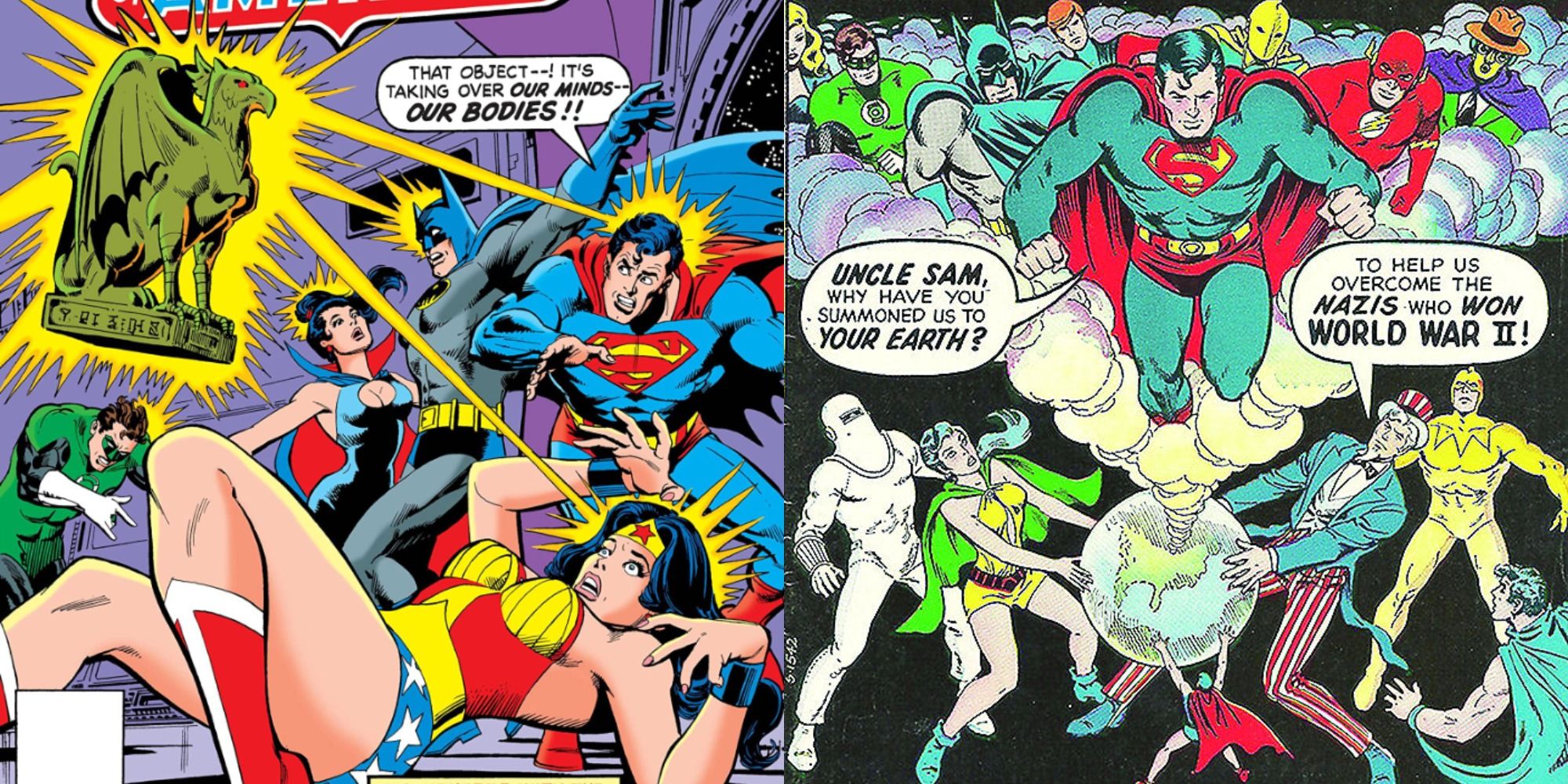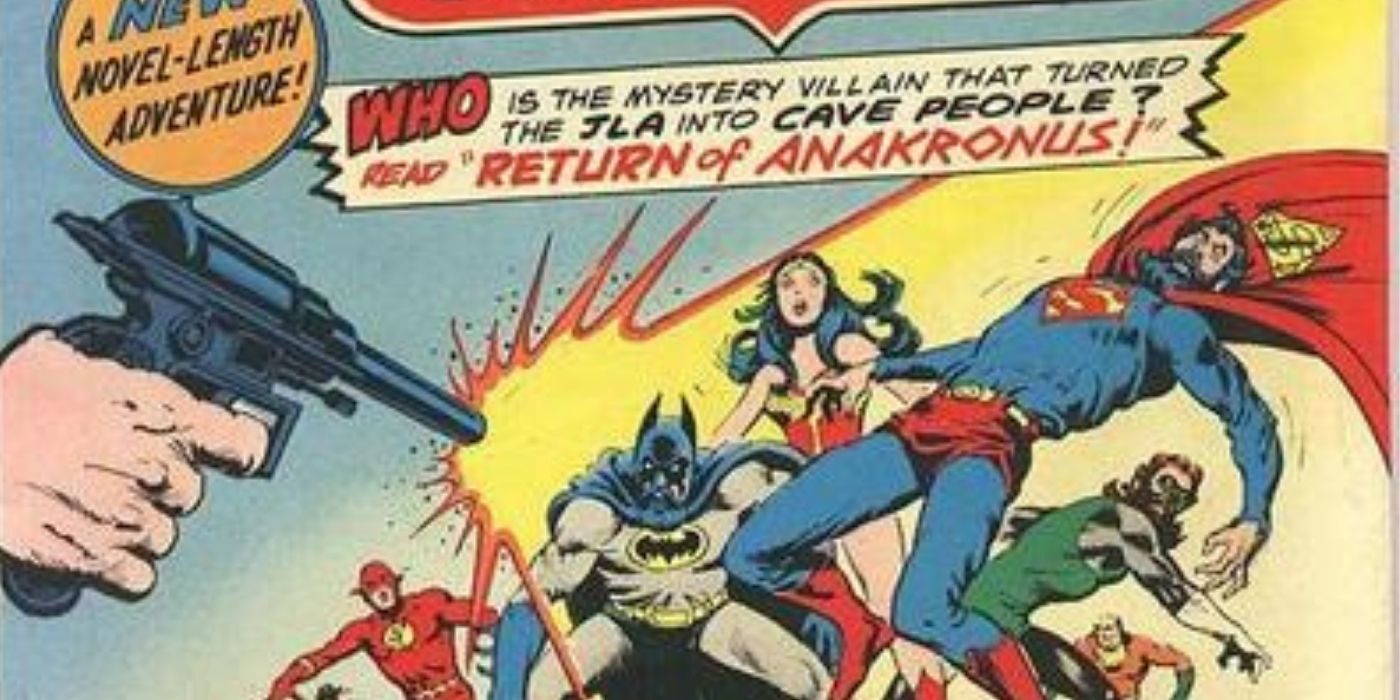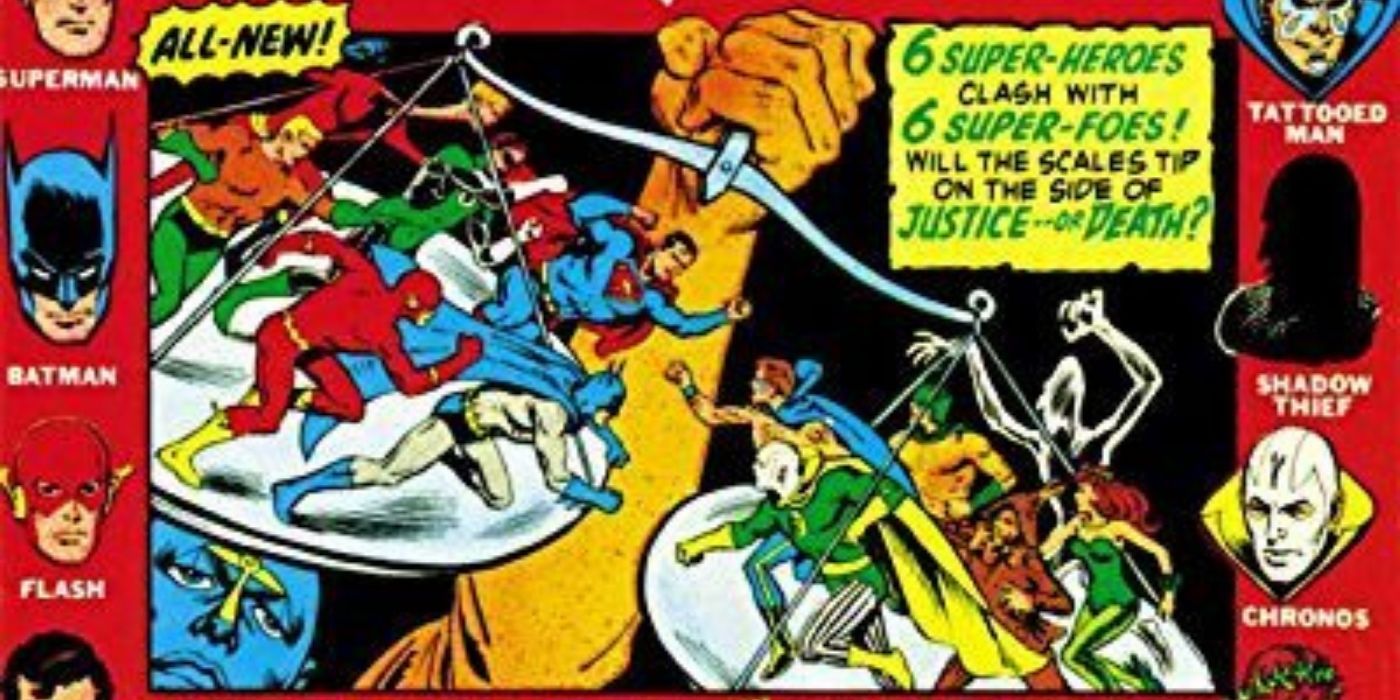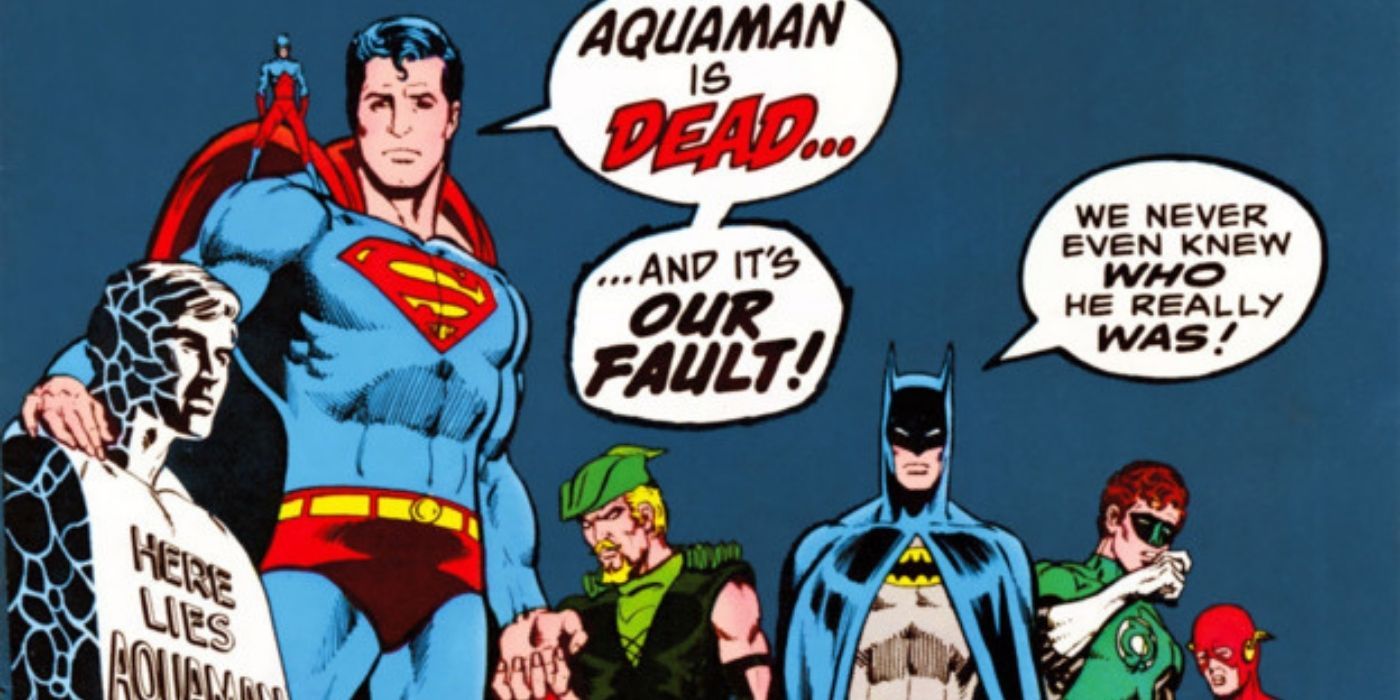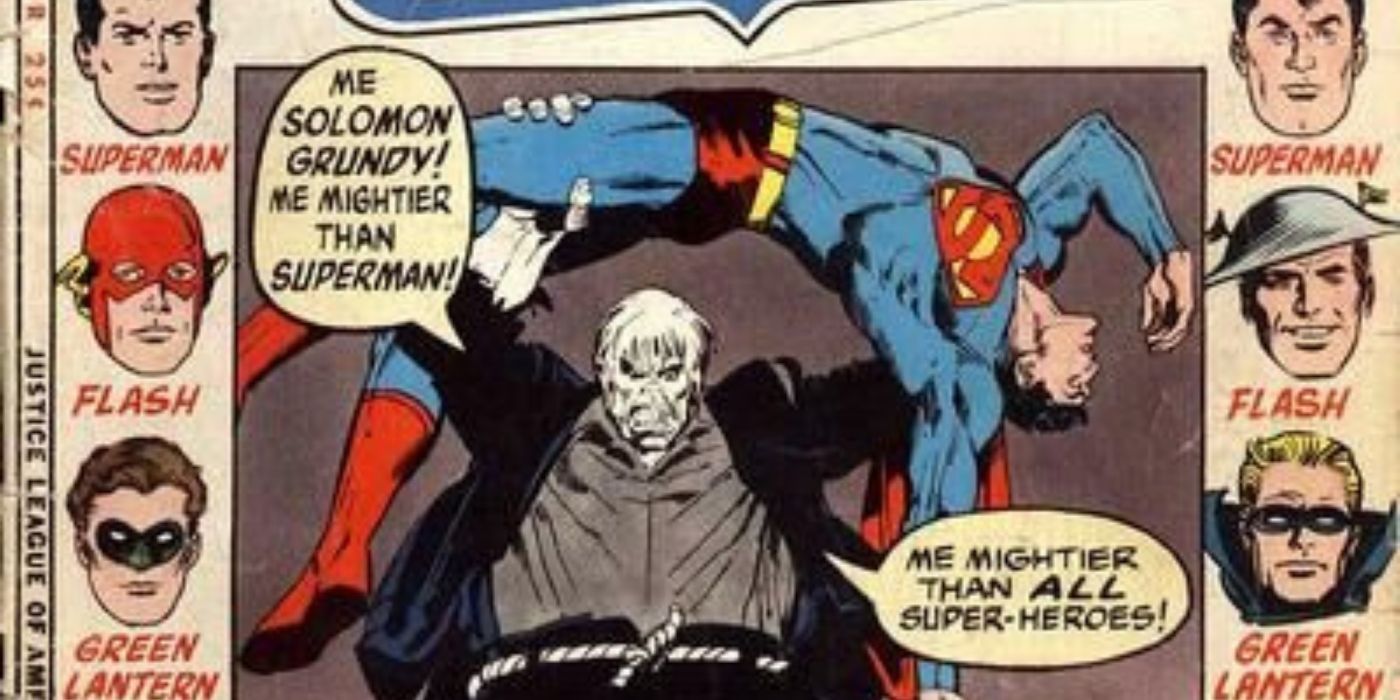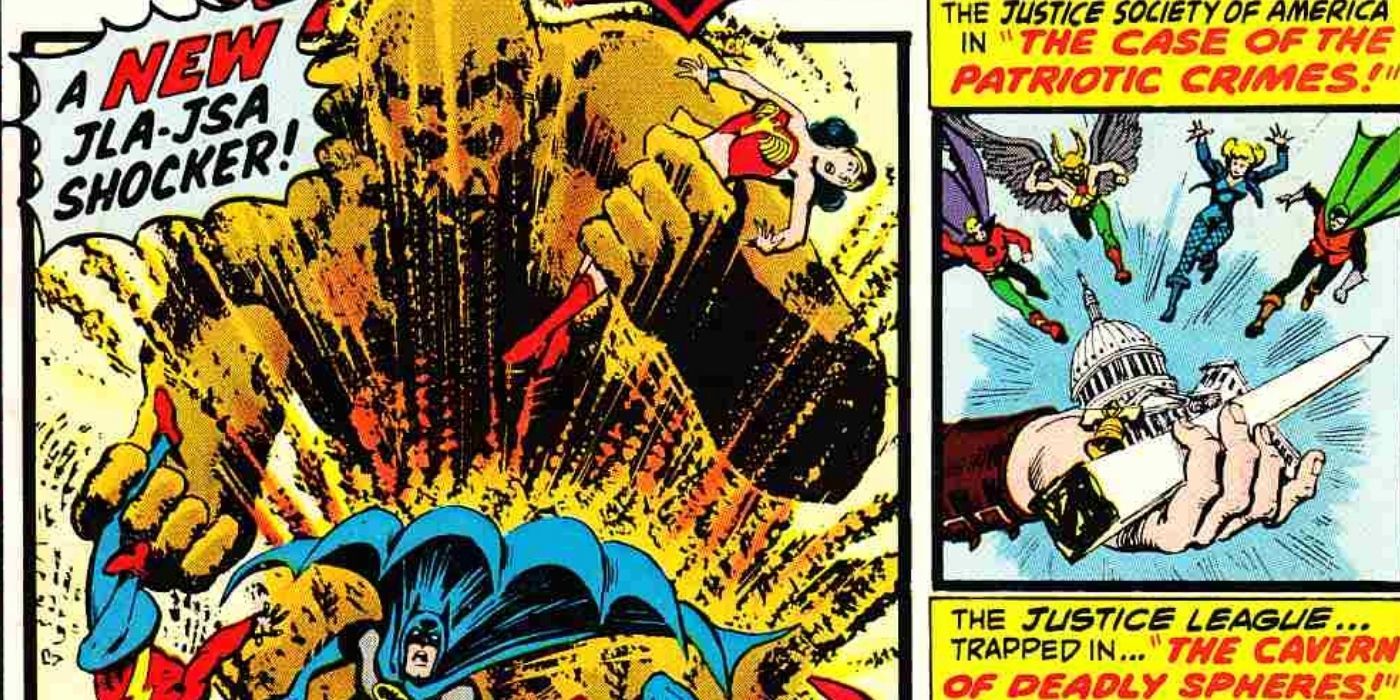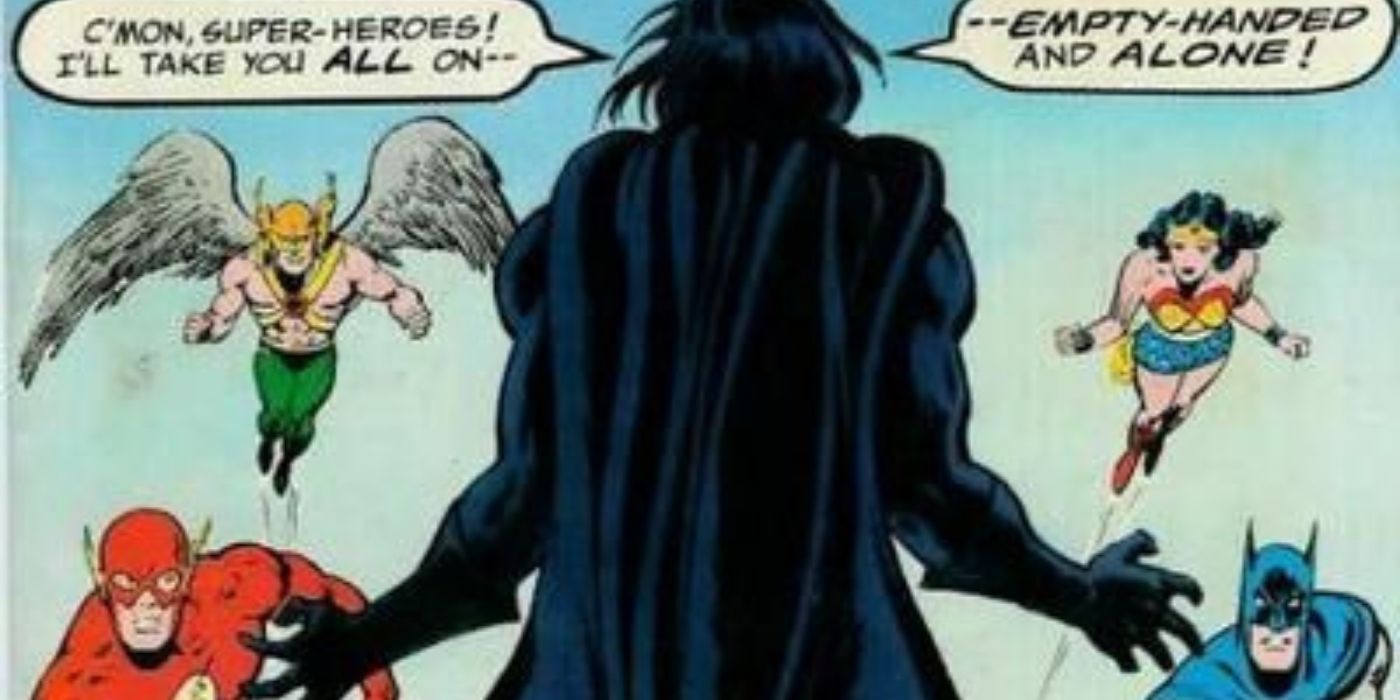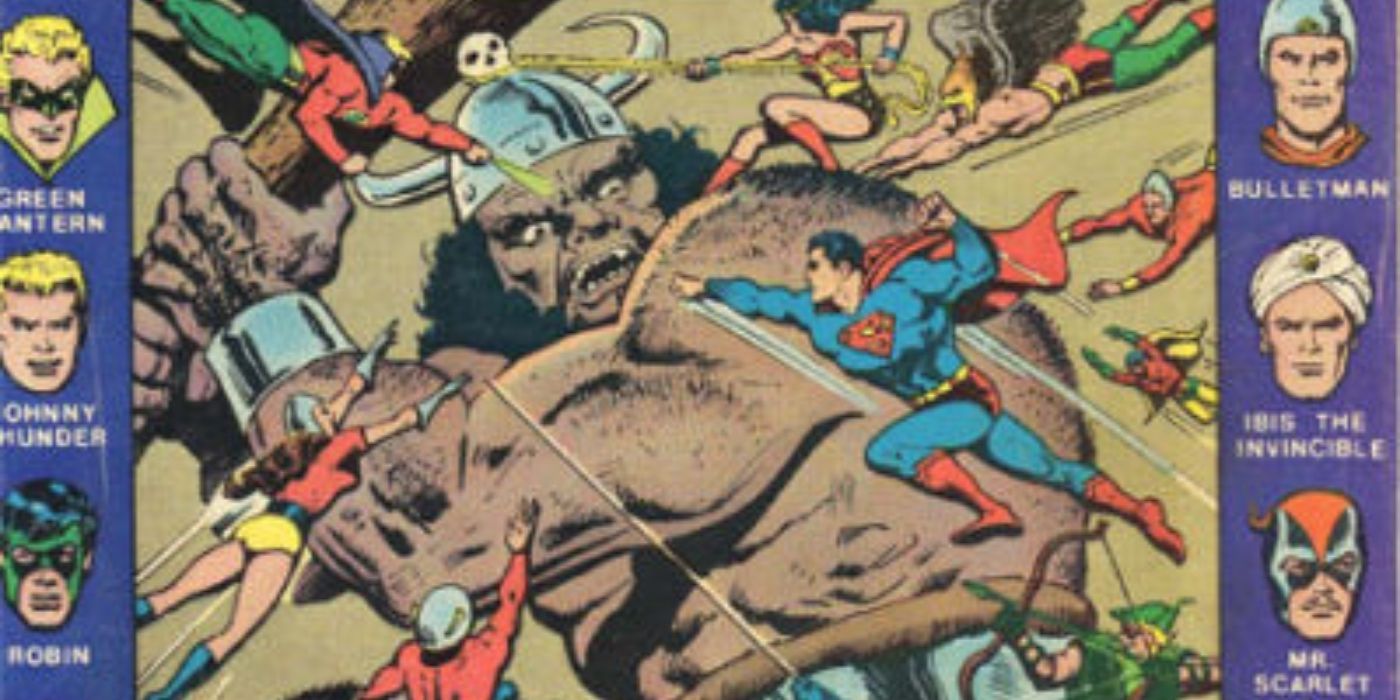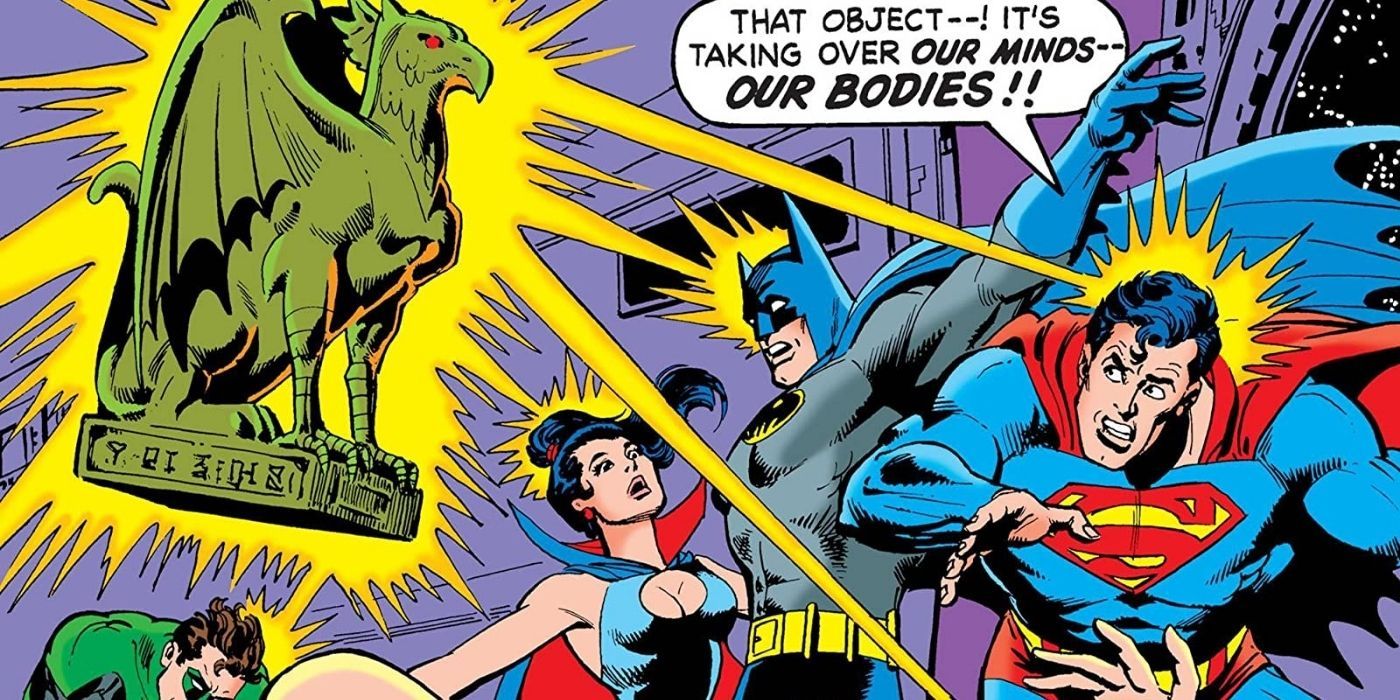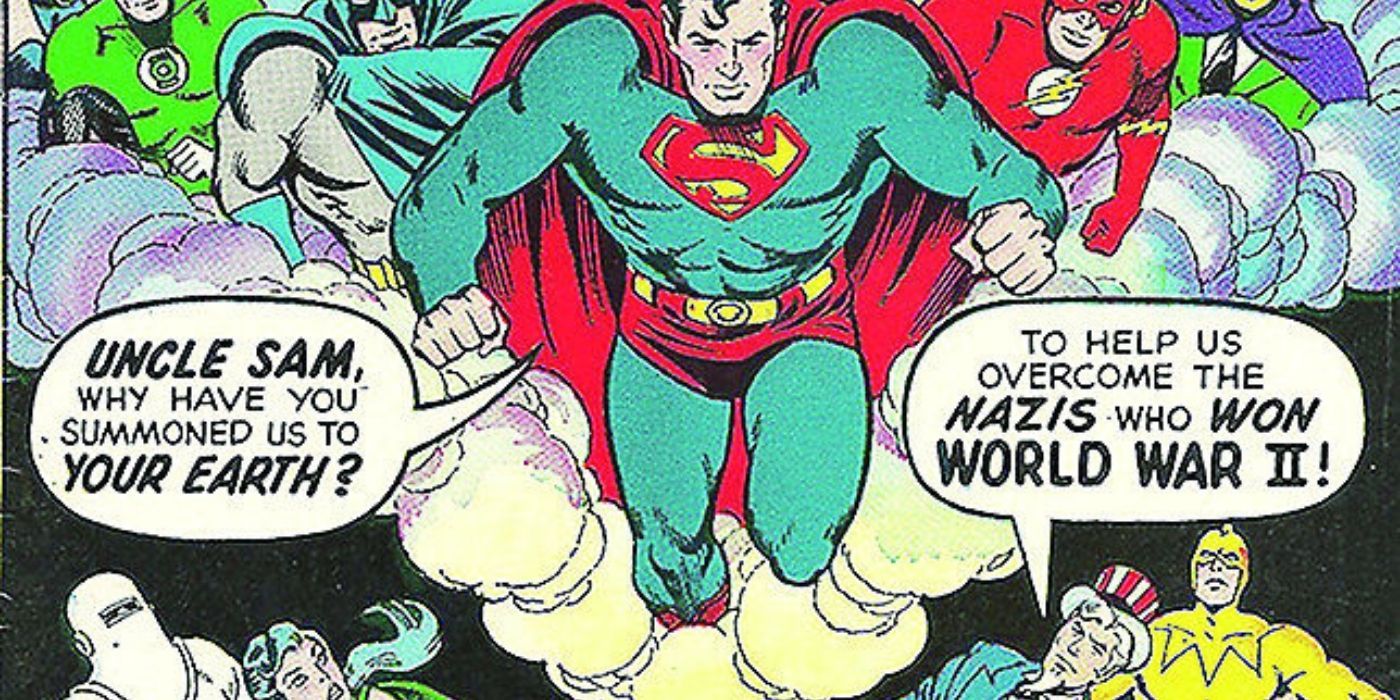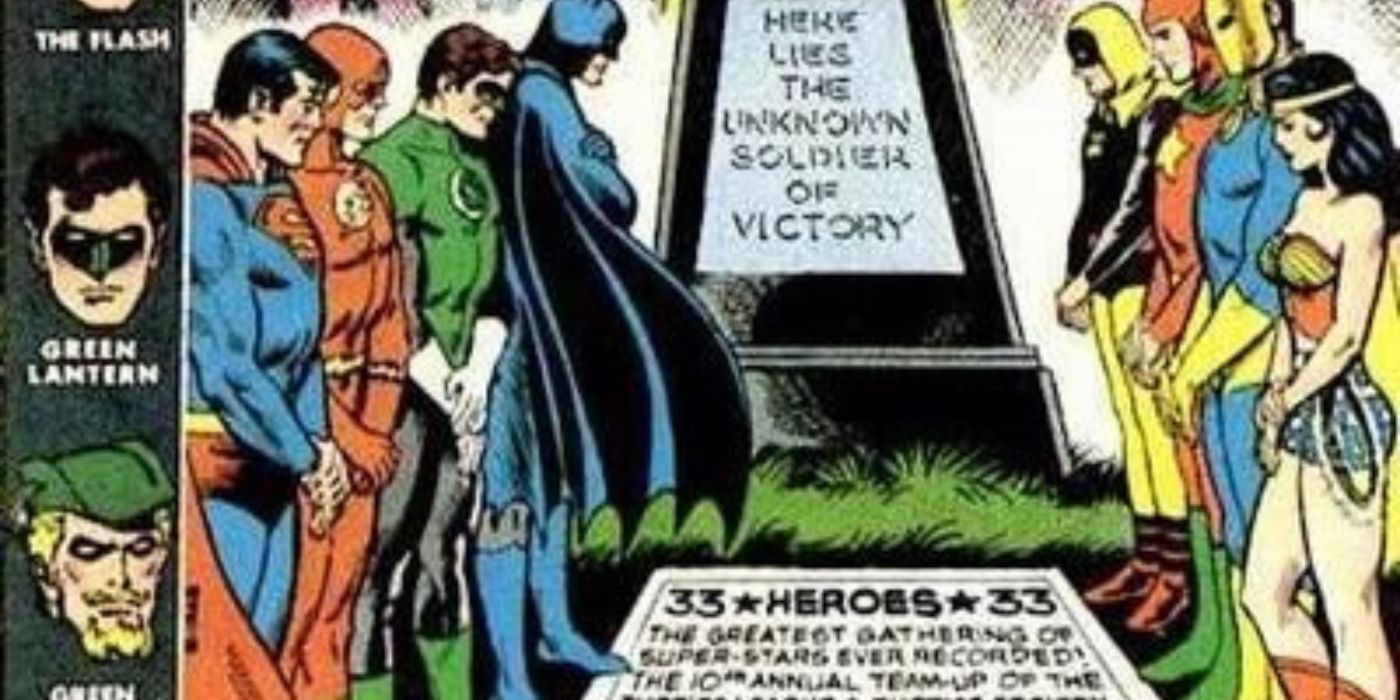The Justice League was the premiere team-up book of the Silver Age until later eclipsed by the rise of Marvel. Coming into the '70s, new blood was being brought in as the older writers retired or were pushed aside. The decade would bring several new writers to the JLA, some of DC's best like Denny O'Neil, Len Wein, Gerry Conway, Cary Bates, and Elliot S. Maggin. The art for the decade would be handled by Dick Dillin and various inkers. Dillin would stay on the book for 12 years until his death in 1980.
In the '70s, the JLA became a book where the heroes of defunct comic book companies were revived and placed other Earths (Earth-X, Earth-S) in epic tales that spanned worlds and dimensions.
Justice League #114, 1974: "The Return of Anakronus!"
Anakronus takes the honorary JLA'er "Snapper" Carr and his family hostage with a raygun, demanding the money from the charity telethon the JLA is hosting. The villain relates a fantastical story of his last encounter with the JLA in which he utterly defeated them, but they won by cheating. He's lying.
This issue sees the return of "Snapper" Carr, a powerless teenager that was a sort of mascot in the '60s JLA. Based on "Kookie" from TV's 77 Sunset Strip, he wore a leather jacket, drove a hot rod, and snapped his fingers constantly. It was never really explained what he was doing there and why the League let him hang out with them.
Justice League #111-112, 1974: "Justice League of America: Balance of Power!"
Fronted by the mysterious Libra, the Injustice Gang of the World is a ruse using JLA villains to unknowingly help Libra steal the JLA's powers. Libra then tries to steal half the power of the galaxy but can't hold it and expands into nothingness, taking the JLA's powers with him.
A proto-Legion of Doom, with some b-list villains like The Tattooed Man Mirror Master, Chronos, and some that went on to better things like Scarecrow and Poison Ivy. It's a two-parter and they get their powers back by reviving the robot Amazo to re-absorb them from space. This is a 100-pager with a Seven Soldiers story as well as a '60s JLA adventure, all for 60 cents.
Justice League #122, 1975: "The Great Identity Crisis"
Doctor Light sneaks into Superman's Fortress and using a trophy stored there, steals and then swaps the personal memories among several JLA'ers gathered there. It's a plot to trap and kill the members. This has the result of Barry Allen thinking he's Bruce Wayne, etc.
Doctor Light is a character that had died and come back to life many times and has been retconned and re-retconned. This is him before any of that with a plan both very clever and incredibly complicated. Too complicated to succeed, but entertaining to see how the heroes get out of it.
Justice League #92-93, 1971: "Solomon Grundy - The One and Only"
The annual team-up between the Justice League and the Justice Society continues. An alien child causes big problems when they lose their pet on earth, and Solomon Grundy is awakened. The "villain" in the story is actually a child, grown to enormous size and lashing out due to fright. This means the JLA/JSA has to fight it without hurting it.
These team-ups were something the readers looked forward to every summer since the first one in JLA #21, 1963. The Earth 1 and their Earth 2 counterparts getting together to fight some huge menace to one world or another, or both. Usually, the writers and editor will use these team-ups to revive a particular hero or villain not seen for a while. This time it's Solomon Grundy.
Justice League #113, 1974: "The Creature in the Velvet Cage!"
The Golden Age Sandman asks the JLA and JSA to help him re-capture his old sidekick, Sandy, who had been mutated by the lab accident and kept sedated for 30 years. After the mutation, Sandy had turned insane so Sandman kept locked up and unconscious.
This is a surprising and emotional story, as Sandy was only insane right after the accident and came back to his senses, but by that time, he was locked up and sedated, unable to speak. Sandman is devastated. Another annual team-up of the JLA and JSA, this is a 100-page giant and features classic '60s JLA and '40s JSA stories.
Justice League #123-124, 1975: "Where on Earth Am I"
Cary Bates and Elliot S. Maggin, two JLA writers on Earth-Prime, while plotting a new issue of JLA, Bates gets transported to Earth 2. Maggin follows his partner but ends up on Earth-1. Bates finds he has the power to cause things to happen through his imagination and becomes a supervillain.
DC writers did a lot of this in the '70s. Many were young, in their late 20s and early 30s, and were the first generation that grew up on comics to enter the business. They were having fun, and exploring meta storylines and how to break the 4th wall in a unique way. Both Bates and Maggin would have long careers in comics, particularly at DC.
Justice League #135-136, 1977: "Crisis in Eternity"
Captain Marvel (now called Shazam) villain King Kull has taken over the Rock of Eternity, and it using to send troops to Earths 1 and 2. The JLA and JSA with the heroes of Earth-S gather to fight Kull and stop his taking over the universes. The Earth-S heroes are the Squadron of Justice and consist of Bulletman and Bulletwoman, Spy Smasher, Ibis the Invincible, and Mr. Scarlet with Pinky.
Earth-S ("S" for "Shazam") is the home of the original Captain Marvel and the heroes published by Fawcett Comics in the '40 and '50s. DC actually put Cap out of business after a decades-long lawsuit in 1953. In '73, they licensed the Marvel Family, then bought them and the rest of the line outright. Besides the Marvel Family themselves, this marks their first appearance since 1953.
Justice League #166-168, 1979: "The Long Road Home"
The Secret Society of Super-Villains has switched minds with the JLA in order to rob a museum of the valuable Nova Jewels. The plot fails as villains just can't act like heroes, they don't understand the whole "sacrificing for the greater good" thing. They go down in defeat.
This is a 3-issue arc by writer Gerry Conway, in which the heroes are almost cast into the sun. The Secret Society of Super-Villains was a title created by Gerry Conway, who featured them here. Canceled after 15 issues in 1978, the group has been reformed over the years and is in and out of current DC continuity.
Justice League #107-108, 1973: "Crisis on Earth-X!"
JLA and JSA in 1973 land on Earth-X help The Freedom Fighters of Earth-X fight the Nazis who have won WW2. The war had continued for decades until the Germans developed a mind-control ray and took over the planet. The Freedom Fighters are what's left of Earth-X's superheroes after the decades-long fight took away their friends.
The Freedom Fighters of Earth-X were a group of 1940s heroes DC had purchased outright from the owners of what was left of Quality Comics when the publisher went out of business in 1956. DC had owned them but never did anything with these particular heroes until this story came out in 1973. They were: Uncle Sam, Doll Man, The Ray, Black Condor, Phantom Lady, and the Human Bomb.
Justice League #100-103, 1972: "The Unknown Soldier of Victory"
The Seven Soldiers of Victory are lost in time and the only ones that can stop a villain named Iron Hand from crushing the earth. The JLA and the JSA team up to find them in the past. This is an epic across time and inter-dimensional space, written by Len Wein and edited by Julie Schwartz, spanning three issues. It is the first time the Seven Soldiers have been seen since the 1940s.
The Seven Soldiers of Victory were The Shining Knight, The Crimson Avenger and Wing, The Star-Spangled Kid and Stripesy, The Vigilante, and Green Arrow. They were an attempt by DC in the '40s to replicate the JSA, using a group of B-list heroes. It lasted 14 issues. The Soldiers are now appear in Star Girl.

